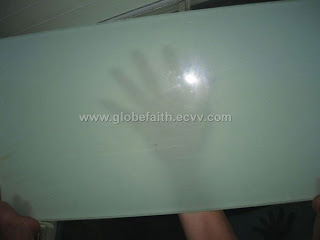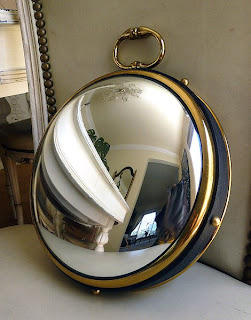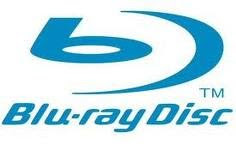Alternative Energy Source: a source of energy other than the burning of a fossil fuel.
Geothermal Energy: Earth´s internal energy.
Biomass: plant matter or animal waste that can be used as a source of energy.
domingo, 26 de septiembre de 2010
Vocabulary #15
Desalination: getting fresh water from seawater.
Water Cycle: the continuous movement of water between Earth´s surface and the air,changing from liquid to gas to liquid.
Grounwater: water that seeps into the ground into spaces between bits of rock and soil.
Water Table: the top of the water-filled spaces in the ground.
Aquifer: an underground layer of rock or soil filled with water.
Well: a hole dug below the water table that water seeps into.
Reservoir: a storage area for freshwater supplies.
Water Cycle: the continuous movement of water between Earth´s surface and the air,changing from liquid to gas to liquid.
Grounwater: water that seeps into the ground into spaces between bits of rock and soil.
Water Table: the top of the water-filled spaces in the ground.
Aquifer: an underground layer of rock or soil filled with water.
Spring: a place where groundwater seeps out of the ground.
Well: a hole dug below the water table that water seeps into.
Reservoir: a storage area for freshwater supplies.
Vocabulary #14
Renewable Resource: a resource that can be replaced in a short period of time.
Ozone Layer: a layer of ozone gas in the atmosphere that screens out much of the Sun´s UV rays.
Fossil Fuel: a fuel formed from the decay of ancient forms of life.
Smog: a mixture of smoke and fog.
Acid Rain: moisture that falls to Earth after being mixed with wastes from burned fossil fuels.
Ozone Layer: a layer of ozone gas in the atmosphere that screens out much of the Sun´s UV rays.
Fossil Fuel: a fuel formed from the decay of ancient forms of life.
Smog: a mixture of smoke and fog.
Acid Rain: moisture that falls to Earth after being mixed with wastes from burned fossil fuels.
sábado, 25 de septiembre de 2010
Vocabulary #13
Opaque: completely blocking light from passing through.
Transparent: letting all light through,so that objects on the other side can be seen clearly.
Translucent: letting only some light throught, so that objects on the other side appear blurry.
Polarization: allowing light vibrations to pass through in only one direction.
Refraction: the bending of light rays as the pass from one substance into another.
Convex Lens: a lens that curves outward (is thicker at the middle than at the edges) and brings light rays together.
Concave Lens: a lens that curves inward ( is thicker at the edges than at the middle) spreads light rays apart.
Transparent: letting all light through,so that objects on the other side can be seen clearly.
Translucent: letting only some light throught, so that objects on the other side appear blurry.
Polarization: allowing light vibrations to pass through in only one direction.
Refraction: the bending of light rays as the pass from one substance into another.
Convex Lens: a lens that curves outward (is thicker at the middle than at the edges) and brings light rays together.
Concave Lens: a lens that curves inward ( is thicker at the edges than at the middle) spreads light rays apart.
Vocabulary #12
Bioluminescence: light produced by living things.
Light Ray: a straight-line beam of light as it travels outward from its source.
Law of Reflection: the angle of an incoming light ray equals the angle of the reflected ray.
Concave Mirror: a mirror that curves in on the shiny side.
Convex Mirror: a mirror that curves out on the shiny side.
Light Ray: a straight-line beam of light as it travels outward from its source.
Law of Reflection: the angle of an incoming light ray equals the angle of the reflected ray.
Concave Mirror: a mirror that curves in on the shiny side.
Convex Mirror: a mirror that curves out on the shiny side.
Vocabulary #11
Rock: a naturally formed solid in the crust,made up of one or more minerals.
Igneous Rock: a rock formed when melted rock material cools and hardens.
Sedimentary Rock: a rock made of bits of matter joined together.
Fossil: any remains or imprint of living things of the past.
Metamorphic Rock: a rock formed under heat and pressure from another kind of rock.
Igneous Rock: a rock formed when melted rock material cools and hardens.
Sedimentary Rock: a rock made of bits of matter joined together.
Fossil: any remains or imprint of living things of the past.
Metamorphic Rock: a rock formed under heat and pressure from another kind of rock.
Humus: decayed plant or animal material in soil.
Pollution: adding any harmful substances to Earth´s land,water,or air.
Rock Cyccle: rocks changing from one form into anther in a never-ending series of process.
martes, 21 de septiembre de 2010
Land Pollution
Academia Interamericana de Panamá Sede-Cerro Viento
Land Pollution
Land Pollution is a degradation of Earth´s land surfaces often caused by humans activities and their misuse on land resources.It occurs when waste is not disposed properly.Health hazard disposal of urban and industrial wastes,explotaition of minerals,and improper use of soil inadequate agricultural practices are a few factors.Urbanization and industrialization are major causes of land pollution.The Industrial Revolution set a series of events into motion which destroyed natural habitats and polluted the envirotment,causing diseases in both humans and other species of animals.
The Main Problem:
The main problem in my comunity is that people who pass near my house through waste and they don´t care that damage our environment.So,when they pass i told them that is bad to through waste.

Posible Solution:
In my opinion, i can make an activity with my friends of my comunity and tell them that we have a problem of land pollution.So.when i said the problems that has our comunity they will tell to his parents,to solution it.
PLEASE, TAKE CARE OF OUR ENVIRONMENT
martes, 14 de septiembre de 2010
Album 1 Invisible Light
INTRODUCCION
Scientist has formed ideas of how light travels, they explines that light travels in tiny bundles of energy, the human eye pick up many photons of light in and instant, now we know that there wavelenghts of lights that we dont see. Together these wavelenghts are called electromagnetic spectrum.
Radio Waves
The Radio Waves are a type of electromagnetic radiation with wavelenghts in the electromagnetic spectrum longer than infrared light. Like all other electromagentic waves, they travel at the speed of light. Naturraly-occuring radio waves are made by lightining, or by astronomical objects.Radio Waves are longest waves of electromagentic spectrum carry signals in codes (AM/FM).
The Radio Waves are a type of electromagnetic radiation with wavelenghts in the electromagnetic spectrum longer than infrared light. Like all other electromagentic waves, they travel at the speed of light. Naturraly-occuring radio waves are made by lightining, or by astronomical objects.Radio Waves are longest waves of electromagentic spectrum carry signals in codes (AM/FM).
Microwaves
Microwaves are electromagnetic waves with wavelenghts ranging from as long as one meter to as short as one millimeter.Are short waves radio waves;water and food absorve microwaves readily.A microwave oven uses electromagnetic waves, too.
Infrared Light
Infrared light is electromagnetic radiation wavelenghts are longer than that of visible light. Infrared means "just beyond red ."Infrared waves are next to visible red waves in the spectrum. When you stand in sunlight, it is the Sun´s infrared waves that arm you. All objeects give off infrared waves, depending on their temperatures. Warmer objects give off more infrared waves than cooler objects do. Special photographic film and electronic sensors can be used to detect infrared light.
Blu - Ray
Blu -Ray (official abbreviation BD) is an opticaldisc storage medium designed to supersede then started DVD format. The nanme Blue - Ray Disc derives from the "blue laser" used to read the disc.
Gamma Radiation
Gamma Radiation, also known as as gamma rays. A special"gamma camera" detects the rays and produces images of activity in the person´s brain.
Ultarviolet Light
Ultraviolet Ligh is a electromagnetic radiation with a wavelenght shorter than that visible ligh, but longer than X Rays. Ultraviolet light from the Sun can cause skin damage. Wearing sunscreens that block both long and short ultraviolet rays- UVA and UVB- can help protect you. Earth is protected from much of the Sun´s UV light by the ozone layer. The ozone layer is part of the upper atmosphere that screens out UV light.
X - Rays
X -Radiation (composed of X - Rays) is a form electromagnetic radiation. X - Rays have a wavelenght. The amount of X rays used at any time is carefully controlled to protect you from harm.
lunes, 13 de septiembre de 2010
Vocabulary #10
Mineral: a solid material of Earth´s crust with a definite composition.
Luster: the way light bounces off a mineral´s surface.
Streak: the color of the powder left when a mineral is rubbed against a hard, rough surface.
Hradness: how well a mineral resists scratching.
Cleavage: the tendency of a mineral to break along flat surfaces.
Ore: a mineral containing a useful substance.
Gem: a mineral valued for being rare and beautiful.
Nonrenewable Resource: a resource that cannot be replaced within a short period of time or at all.
Luster: the way light bounces off a mineral´s surface.
Streak: the color of the powder left when a mineral is rubbed against a hard, rough surface.
Hradness: how well a mineral resists scratching.
Cleavage: the tendency of a mineral to break along flat surfaces.
Ore: a mineral containing a useful substance.
Gem: a mineral valued for being rare and beautiful.
Nonrenewable Resource: a resource that cannot be replaced within a short period of time or at all.
Suscribirse a:
Entradas (Atom)


















































